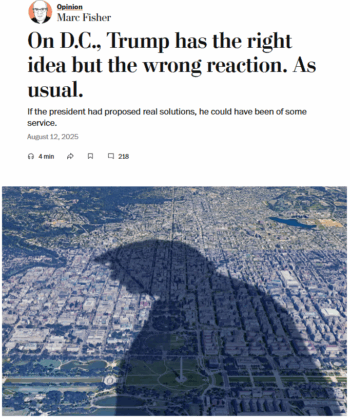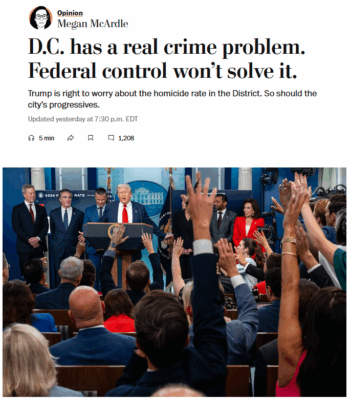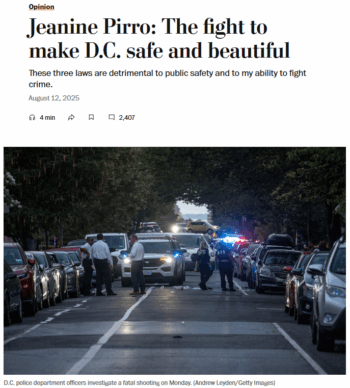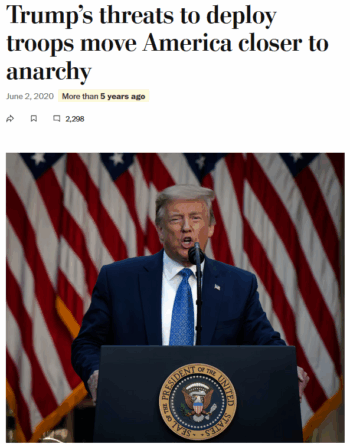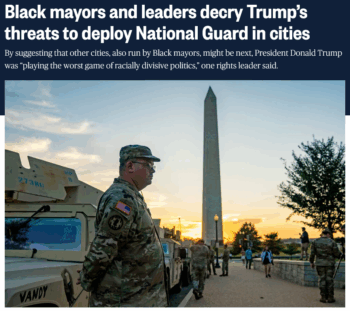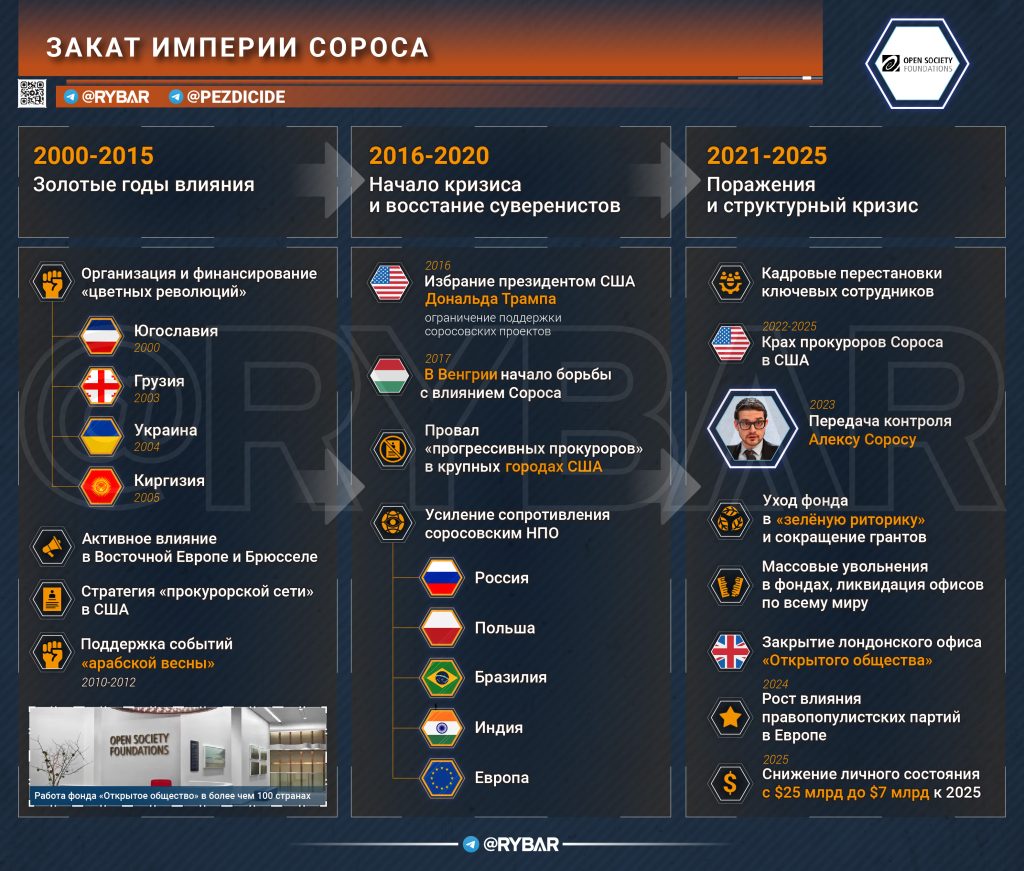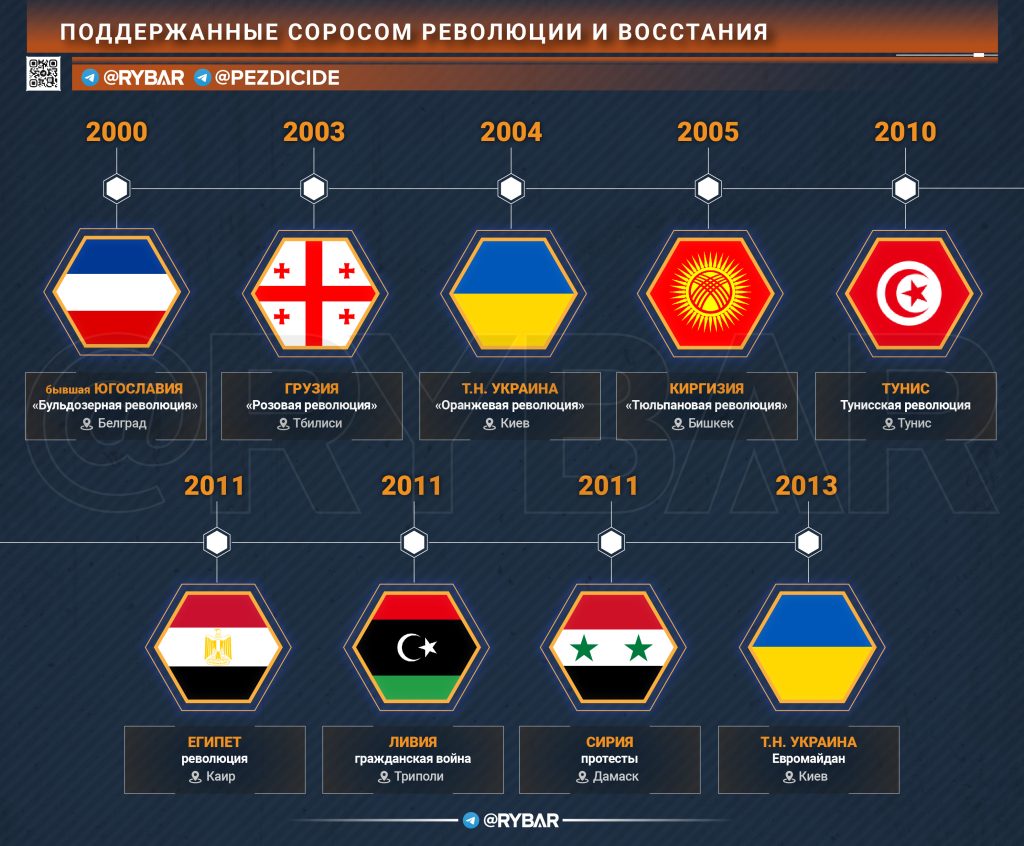Influencerism is the highest form of capitalist realism
A political manifesto from mid political influencer Yasha Levine.
Yasha Levine
Aug 19, 2025
In the early 1990s, when the internet started hitting the consumer market in America, I was a Soviet immigrant kid in middle school in San Francisco. After school, I’d hit Yahoo and click over to the adult section, where I’d spend half an hour listening to pings and screeches while downloading photo sets of mostly soft-core porn. I was just a kid, and this technology seemed normal to me. Interesting but otherwise unremarkable and pretty boring, too. I can’t say the newness of it was something that was apparent to me. Everything was new to me — I was living in a new country, speaking a new language. So I took the sudden appearance of the internet as just another new thing in a new environment. I definitely wasn’t aware that a lot of people in America — many of them within a 40-mile radius of where I lived — were talking about this tech in religious terms. Not that I, a kid of an atheist state, would even know what “religious” meant.
Anyway, I found out later — particularly when I was writing Surveillance Valley — that America’s media ecosystem at the time had been filled with a messianic fervor. There were utopian proclamations about a coming revolution. The internet and the personal computer were going to change everything. They would move the world in the direction of democracy and egalitarianism and limitless wealth. An unstoppable wave was about to rip through the world and wash away bureaucracies, governments, business monopolies, and militaries, clearing the way for a new global society that was more prosperous and freer in every possible way. This was the mainstream position. The kind of stuff you’d read in Wall Street op-eds. As we all know now, it didn’t work out that way. No matter what part of society the internet touched, it ended up concentrating political and economic power, spawning a new oligarchic class, and creating a pervasive system of surveillance and control. And yet this old-school internet utopianism refuses to die. From AI to self-driving cars to Substack, lots of people still want to believe in the dream.
I wrote recently about the Substack Utopianism I’ve been seeing on here — about how there is a certain crew that’s pushing Substack as some kind of anti-establishment platform that will help cure the ills of American media. Today I want to address another dimension of this Platform Utopianism, our ongoing belief in the power of politics by app. It has to do with this: It’s true that technologies like Substack — but also Patreon and YouTube and other services that allow direct monetization of cultural and political media — have allowed people to bypass traditional media structures to reach big audiences and make money, sometimes huge amounts of money. In this new world, older, more traditional power structures play a smaller role, and things are more democratic. People rise up and go viral more on the pure strength of their talents. It seems more meritocratic. And it is in a way. But these technologies, while they have thrown off the old masters, have acquired a new one. And this new master is harder to see. It’s not a person who tells you what you can and cannot do. The new master doing the talking is a market force — nudging, pushing, rewarding, penalizing… On the surface, these new platforms have shaken up the way the media operates, made it more democratic. But deeper down, in reality, what they have done instead is to bring the media — and the people who produce it — closer in line with market forces. In that sense, they’re just another manifestation of the slow grind of neoliberalism — bringing everything into the market, commodifying every little bit of human life that hasn’t been commodified yet.
Let me try to explain what I mean by starting with a personal story and a few observations about the state of our media today.
My direct-to-consumer journalism journey started in earnest about five years ago during the lockdowns when I began posting in a real way on Substack.
Evgenia and I had just moved back to LA from NYC because I was in the process of selling a documentary series based on Surveillance Valley — aiming at one of the big streaming networks. Everything was going according to plan, but then COVID hit. Hollywood stalled, producers started freaking out, projects got abandoned, and my own show was a victim of that whole thing. So there we were — stuck in LA in a place we were temporarily subletting from a friend of a friend, the two of us isolated from everyone, with no job, future prospects uncertain, worried about catching the virus and dying. We were all characters in Daniel Defoe’s Journal of the Plague Year— except we had Twitter and Facebook and…Substacks.
Everyone talks about how shitty that time under COVID restrictions was — with many basing their entire political identity on opposing anything like that from happening again. But to me it was kinda nice. I had become used to my literary ventures flaming out, so I wasn’t that surprised or shocked that the Surveillance Valley show was cooked. And I was enjoying the lockdown. The suspension of normal life in those days was actually quite pleasant, and it made me even kind of hopeful about the future. There was the fear and the death and control, sure. But there was an optimism, too. The pandemic, at least at first, put the brakes on our consumerist rat race. Many more people had time on their hands to hang out, to cook, to think about the world, and to experience their lives outside the never-ending bullshit jobs cycle. I thought that maybe something positive would emerge, that the status quo would get shaken up. I know I wasn’t the only one who felt this way. Many people I know experienced this hope in that first year, too.
On a personal level, things were more or less good for me, too. We weren’t too worried about money and had actually a great quality of life during the lockdowns. We had scored a big, relatively inexpensive apartment near Griffith Park. We walked, hiked, and ran in the hills almost every day, had plenty of time to think and write, befriended (and illegally fed) a sad and gimpy pack of coyotes that emerged from the hills when people and cars disappeared for a while. But the best thing of all was that Evgenia found out she was pregnant. So I was going to be a father soon. I was happy and had faith in the future, even if the future was uncertain.
All this was overshadowed, though, by the growth and the toxicity of the online world and my increasing cynicism about my profession — journalism. It had to do with Substack.
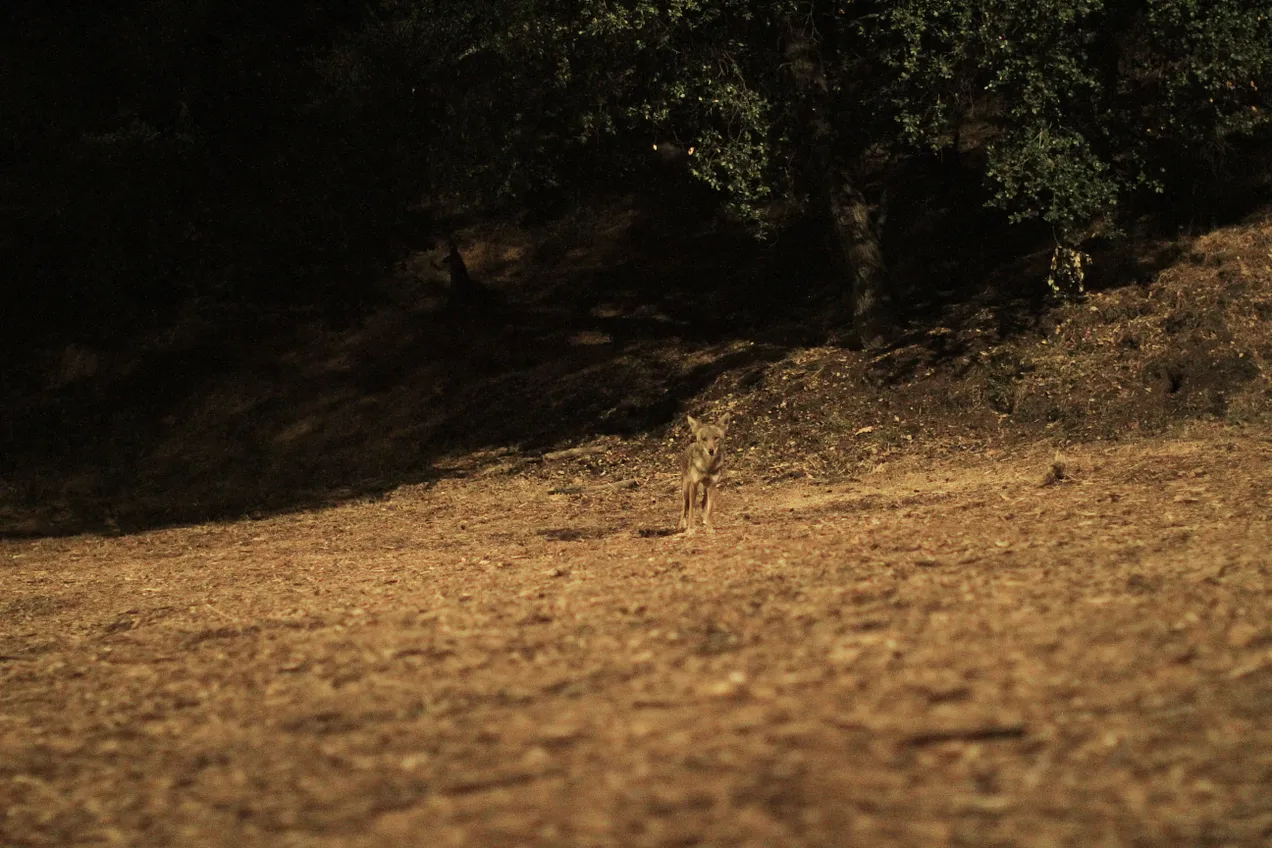
Coyote's of Griffith Park (Photos by Rowan)
When I first started writing on Substack a few months before the pandemic hit, it seemed like a great deal. I was planning on writing another recovered history book — this one focusing on how the United States weaponized nationalism and ethnic identity in its war against the USSR. I pictured it being half history and half memoir/biographical, as my own life as a Jewish Soviet was bound up with this program. It was nice to be liberated from traditional publishing. I didn’t need to waste my time pitching and convincing editors to run stories or have to water down my style. And anyway, there weren’t that many opportunities to publish anymore. Journalism had pretty much collapsed. Publications were going bankrupt all the time, and freelancing had become a joke, paying only a few hundred bucks. So I worked on researching this future book, publishing longish historical investigations when I had something to say. People signed up, and it seemed great. Meanwhile, I kept pushing the tv project — still hoping that Surveillance Valley would make it to the big screen.
But as we all got deeper into COVID and I realized that the TV show was truly tanking and that there was no more money coming down the pipeline, I started to get frantic. I wanted to squeeze more money out of my Substack. I needed the cash. So I started moving away from doing historical investigative journalism into more quick influencer-type stuff to stay relevant and be part of the news cycle — with an eye for increasing my paid subscriber base. Right away I noticed a couple of things. The first and most obvious one was what made money and what didn’t. The quick, very topical reaction stuff — writing about what everyone else was writing about, being part of the news cycle — that’s what brought in the eyeballs and the subs. The more scandalous, the more tied to rumors and big personalities, the closer it was to what was on cable news, to what all the other political influencers were talking about it, the more money it made. The longer investigative work that I was doing — the stuff that took time to research and write, well, that could do okay. But it stood outside of the news cycle and so it wasn’t really interesting to people. And so in the end it would barely register. Doing longer historical investigative work was why I had started my Substack in the first place. But I quickly learned that it didn’t really pay and was basically unsustainable. The effort-to-subscription ratio didn’t pan out. It was operating at what was basically a loss. And so I gradually abandoned the longer stuff. Because what readers really wanted — what they craved — was what fed into the news cycle and fed their daily political dopamine habits. People wanted their biases confirmed to them over and over and over again, to have someone hate on the people they hate, to rail against the things they don’t like, and they wanted it in quick bites, and they wanted it at exactly the same time that other political influencers were talking about it. That was what made the money on this direct-to-consumer platform.
Part of these realizations, the instrument that rubbed this obvious truth in my face every day, was Substack’s NASDAQ graph. If you’ve ever run a paid Substack, you know what I’m talking about.
Every time I’d log in to write a post or even just to reply to a comment someone had left, I’d be confronted with a landing page that looks like something a day trader would see: newsletter growth, estimated annual revenue, stats on paid and unpaid subscribers, little boxes containing how much my stats increased or decreased over the last month — or six months or year. And then I’d see the stats broken down by every email I had sent out. So I’d see right away what made money and what didn’t. I found it a little irksome. It was like opening up a portfolio and seeing how much money my trades made. Except in this case, I wasn’t buying and selling stocks or bonds or crypto, I was putting my own ideas — little bits of myself — for sale and seeing how much they fetched. In real time, too.
Initially, I didn’t think much of it. It made sense that there’d be this graph. I was running a business, right? Substack trying to be helpful. It was trying to empower me with information. I didn’t consider that this chart would affect me and just keep writing how I always wrote: about the things that interested me. But over time, I began to feel the cumulative effect of seeing this NASDAQ chart.
I was constantly being confronted with what made money and what didn’t, all while worrying about my earnings and eyeing the news cycle and considering what to write and what topics to cover. It all conspired to push the money question into my thinking. The impact was subtle, to be sure. But it was there nonetheless, and I felt it get stronger over time. And by the end of the first year of COVID, I started to feel it very distinctly. It was the power of the market: an invisible force that was trying to dictate to me what I should write about and how I should write about it. It was a voice whispering in my ear, telling me what should interest me, and by extension, what should interest my readers.
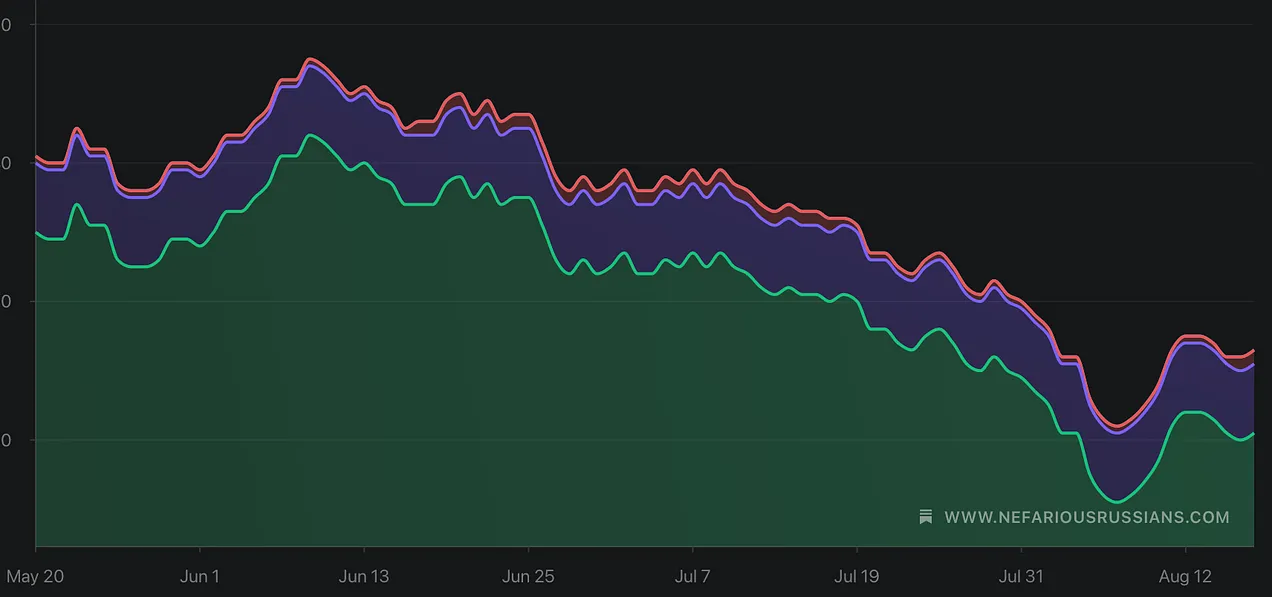
The Substack NASDAQ graph trending down signifies personal failure. “You are a loser in the marketplace.”
Money was always involved in the journalism I did. But it was never so direct. There was always a level of abstraction to it. Back when I still worked for magazines and newspapers, I’d still get the same salary regardless of how many new subs my articles brought in. I’d get the same fee for writing a story, regardless of how many hits it got. So this was different. It was more direct. Indeed, you couldn’t get any more direct. And it started fucking with my head. It started getting me down. Not only did I feel the push of the market on my own thinking and writing, but it began to color how I saw my colleagues and friends in the journalism and media world.
Bit by bit, this new direct-to-consumer journalism model pushed a dark neoliberal view of the world on me. I began to feel that everyone was in it only for personal enrichment — that nothing else mattered to them. I began to doubt the motives of friends and colleagues, people who I knew for a fact weren’t cynical and were in it for the right reasons. But it didn’t matter. Sucked into this weird marketplace of ideas, I couldn’t shake the thought. Like in Inception, the idea had been placed in my mind. I began to see everyone as cynical and self-serving. Politics and political journalism is about morality. And I saw everyone as using this morality as a tool to extract cash from their readers. I began to see examples of them playing to the market everywhere I looked — from the guests they had on, to the angle from which they covered a story, to the sexy selfies they posted with their hard-hitting journalism from the frontlines, the way they swerved from topic to topic to stay with the market or flip their positions because the money pull was much greater on the other side.
People talk about the “marketplace of ideas” — and this is exactly what I felt I was inhabiting: a market where ideas and morality were for sale. And like any big global market, it was full of bullshit and hype and big powerful actors working behind the scenes manipulating it for their own purposes. And of course there were the big platforms — owned by our ruling class — controlling the algorithms and profiting off of it all.
What depressed me even more and made me even more cynical about the situation was the realization that much of American politics these days revolved around various media influencers. They are at the center of our politics. It’s not politicians or political leaders, it’s influencers — they’re at the helm of political culture. And all these influencers, myself included, based their livelihoods on the logic of the market.
What’s interesting is that a distinct type of genre emerged from this technology and the market forces that shaped it: the celebrity interview. Think about it. All the big new political media personalities are all about the interview now. That’s the innovation that it foisted on us: famous influencers interviewing other famous people. That’s the main political content we all watch these days. Evgenia has been talking about this for a while now: the celebrity interview as the dominant form of media that the internet has produced. Not films or shows or even any new type of art. Just interviews with famous people. I think it is significant because it ties into the market logic of these direct-to-consumer media platforms: famous people interviewing famous people is what brings in the eyeballs. It’s low effort, high reward. It’s synergistic. Like two brands doing a collab, both bringing in their fans…doubling the audience. It fits with our atomized age where no one hangs out and talks anymore. People need their digital parasocial relationships. The podcast is the ersatz circle of friends they don’t have. So people love the interview format…can’t get enough of it. And they want more. But interviewing famous people is not enough to drive the clicks anymore. Even panel discussions where famous people scream at each other is not enough. Now you need to put famous people in a circular brawl — you need media gang bangs!

A combined 30 million views on these clips. Think of the ad revenue!
All this feels a little bit ridiculous. I look around and I think, Why the hell did I even get into this profession? I mean, I never wanted to be a journalist. It wasn’t something I dreamed about in high school or college. I didn’t have some civic high school debate team dream of helping American democracy run efficiently. It happened purely by accident. I moved back to Russia after graduating from college and needed a job to support my very frugal lifestyle. And a distant cousin knew someone who knew an editor who was looking for a stringer to file periodic stories from Russia for an American news wire. Right away, after the first few stories I filed, it was clear that I had a talent for it. I could naturally sniff out a story, people talked to me, I could bluff my way into places I shouldn’t be, and I could explain myself in a clear and mildly entertaining way. So I worked as a stringer for a while and then moved over to The eXile in Moscow and got into the more aggressive gonzo-satire side of the business, and I liked it. My previous and only other “professional” job was working at a factory in Berkeley as a technical writer, writing elaborate instruction manuals for assembly line workers who were putting together super high-end concert speakers. So this was an upgrade — a much more interesting way to scrape a living together. But I didn’t take journalism very seriously and never had much respect for journalists — seeing them as usually little more than propagandists and suckups to power. I never thought I’d be a “serious” journalist.
It was only when I moved from Moscow back to California right after the 2008 Wall Street crash and began covering the aftermath of that collapse that did I really start to feel the power of journalism and started taking it seriously. I got a real taste of it when I helped expose the hidden role that Charles Koch, the head of what was then the richest and most politically powerful family in the United States, played in bankrolling the Tea Party Movement — a pro-austerity astroturf campaign aimed at stopping the Obama administration from providing financial relief to homeowners who got screwed by Wall Street when the housing bubble burst. Back then, America’s entire political class had believed the Tea Party was a natural expression of populist anger — and we stumbled, almost by accident, on a whole network of oligarch-funded groups that were orchestrating, coordinating, and bankrolling a movement aimed at stopping government program that would help regular people facing foreclosure at a when all the Wall Street banks were getting stuffed with government bailouts. It’s all half-remembered now, and seems like old news. But it was one of the largest stories and political scandals of that era and an important chapter in recently American history — one of the last nails in the coffin of the Democratic Party. Of course, Obama, being the Wall Street sellout that he was, caved to the demands of the Tea Party, and the program to help the small guys fucked by the big banks didn’t go through while the bailouts to Wall Street continued to flow. Those with connections got theirs while everyone else got fucked — with help from Obama. We dragged the secretive political network backed by the Koch family out of the shadows and put them on the map and tried to educate people here about how power really worked in America, and how much of a stranglehold the oligarchy has over the culture here. But it didn’t really matter. The American people have short memories and channelled all their resentment into electing Trump, as much of a pro-oligarchy president as the previous guy.
But at the time the Tea Party story was pivotal for me. It ultimately turned me “serious” and sent me into political and investigative journalism. It drew my interest to the complex economic systems that surround us to the point that we don’t even recognize they exist. Who controls them? Why? It’s why I was drawn to reporting on California’s water politics and the secretive oligarchic families that controlled the state’s water supply. And this interest also led me to think and write about the origins of the internet — leading me to recover a lost strand in the history of this technology, showing how the internet was developed by the US military as a tool of political and social control. That research became Surveillance Valley.
Until then, I still had a somewhat naive idea about how America worked. I didn’t think that everything around me would be in control of such a tiny number of people, not such complex globe-spanning systems could have such simple and nefarious origin stories. The more I learned, the more I realized that underlying it all there was a vast centralization of power in America — a centralization that seemed very similar to the kind of control I had seen in Russia. My own journalism helped me educate myself and strip of any illusions regarding American Exceptionalism, an idea that had been drummed into my Soviet immigrant mind. It also revealed something about myself to me: that I’m moralistic, that I chafe at the unfair exercise of power, that I don’t like bullies, and in fact that like bullying the bullies. I realized that this was a big part of my personality and journalism allowed me to express it…it allowed me to fuck with power way beyond my means. Even an immigrant nobody like me could wield power against our shitty ruling elite — someone with no money, zero connections to power, and no pedigree to speak of. I was educated in second-rate American public schools and most of my childhood friends never went to college and here the most powerful family in America was sending its media assassins to bury me in dirt.
That’s what got me into journalism. It wasn’t money. There was none. It was morality and a sense of personal and collective empowerment. Obviously I wanted to make enough money to live but it was never the motivating factor.
I’m not naive. I know lot of journalism has always been about cynically chasing attention and riling up conflict for clout and prestige. People have always cynically peddled morality for power and money. But there have always been exceptions — weirdos and freaks like me who weren’t cynical about what they were doing…people who were into it because they really cared. Thinking about this during my first few years of Substack bummbed me out even more. Because I began to see these exceptions — the idealistic weirdos and the freaks — were also falling under the control of these unseen market forces. No one could escape. It was systemic. The platforms allowed the direct commodification of alt-journalism, a part of the profession that had never really been commodified before. And it was too hard to resist. And why resist? Who could say no to money, especially if you were already doing pretty much what you were doing before?
I don’t know…maybe it seems simple to think this way. But seeing money and morality mix this way got me down. It bothered me. My belief in the power of journalism to make a difference was already at a very low point by the time COVID hit and I went on Substack. And being part of the influencer economy from the inside made it collapse even further. So much of it now was just about maximizing clout and gaming the algorithm for reach…
About a decade ago, people were really excited about the rise of the direct funding platforms — Patreon, Substack, YouTube, and now a bunch of small rival platforms that basically do the same thing.
It was seen by many as the realization of the internet’s democratic promise. Journalists, essayists, cartoonists, filmmakers, and basically anyone could now completely avoid editors, publishers, and various authoritarian media gatekeepers. The people were now free. We were now free to directly interface with others…rising on the strength of our talents and abilities. It was purely meritocratic. And there was truth to it. But alongside it was another truth: There’s no editor telling us what to do, but there was something equally powerful: the market. It pushes and nudges, it regiments…It’s all very subtle, too. The control is basically invisible. And lack of success can be explained as your own personal failure, rather than the censorious nature of what the market wants.
The problem goes beyond just journalism. The market affects everything it touches. There are all sorts of examples of influencers being driven to do horrible and destructive things to keep the god of the market satiated — destroying their own bodies, abusing kids… I’m thinking now of that Mormon mom who kept her kids in a gulag to make sure her YouTube channel kept going or the woman who adopted a child from China for clicks and then dumped him because he was just too much work. Mr. Beast is the face of this relentless market force…what began as funny stunts have driven the man, in search of greater and greater shock value and clicks, to essentially recreate Squid Game. The algorithm and the market push you in a certain direction. And it’s relentless.
Looking back on my own Substack journey, I guess I tried to ward off the evil market forces by doing the opposite of what it pushed me to do. In a classic self-destructive defensive mechanism, I began to get even more fringe in my work…to write about stuff that only a tiny group of people would find interesting. I stated to plow the depths of my family tree…writing about my grandparents and their lives. Basically, I rebelled by making sure I didn’t make any money. But that didn’t solve the problem, and in the end, only made me even more depressed. Why the hell am I doing this if I can’t make enough to live and to support my family? If the media business is so shitty, why not just get out? It sent me on a spiral, and there were a few moments when I almost exited the media world for good. I thought about going to med school and at one point was seriously considering opening up a sourdough bakery. It’s funny, too. My book Surveillance Valley was about how the internet began as a Pentagon pacification technology. And here the internet had to work to pacify me, too…pacifying me by poisoning my mind. I was a journalist who liked to fight power, and yet here I was being disarmed — made cynical and nihilistic and bitter. So in the end, this neoliberalization of the media self was doing its job. I was being taken out of commission.
Ultimately, I stayed. The way I saw it, there is a war being waged for the hearts and minds of humanity, and I couldn’t let the evil fuckers win. I couldn’t cede the field of battle to them. But still, I continued to have my doubts. Why should I stay in the fight? Who are these imaginary people that I’m fighting for? Who are these masses that are just waiting to be saved? Am I some kind of insane media Stakhanovite, working overtime, blasting through production goals, working for the collective good…but the collective doesn’t care about me nor does it even care about the collective. What the hell was I doing?
And they I’d go into this Debordian Hall of Mirrors debate with myself. We live in this society of the spectacle…and the people want their spectacle…they demand it. The people want their media algorithmic slop. They want their titillating sex scandal Epstein drip. They want their outrage bait…their C-level celeb roundtables screaming at each other. They want their QANON AND BLUEANON and Call Me Daddy interview brainrot. Sure, the market is evil. But the market can’t function without a consumer base — and “the people” love their media garbage. This is what they want…this is the content they crave. So who am I to get between the people and their entertainment? Who am I to fight it? Let them have their slop. And then I would get philosophical about it. We’ve been conditioned to believe that “information is power” — it’s taken as a basic truth in our information age. But is it true? Because as far as I see it, it’s always been an illusion. Information isn’t power. It never was. Unless you have power, information is just information. And you don’t need much information to build power, you need an idea and belief and you need people. So in our consumerist-spectacle society, information without power becomes just that: a spectacle. And then I think further: What does it mean that all politics is now mediated through the influencer — that the influencer has become our politics and that the influencer, no matter how well meaning, has melded with the spectacle and promotes the spectacle as liberation? Can you even fight the spectacle from within the spectacle by giving a better spectacle? Seems like the answer is, no. Entering the spectacle, we become it. But if the spectacle itself is the problem, then we have to end the spectacle. Right? That should that be our goal? Ending this circular ersatz media existence? And so I come back to square one — maybe I should go to med school after all.
I was just talking about this with Evgenia, and she now leans towards the need for a dictatorship in the early Soviet style of Proletkult run by people like Anatoly Lunacharsky. The problem, to her, is that the people don’t know what they want. What they need is guidance. They need enlightened curation. They don’t need the marketplace of ideas, where their basic instincts are juiced by a malicious media oligarchy, an oligarchy which is itself trapped by these same basic instincts. And I can’t say I disagree with her. The spectacle can’t be the thing that runs the world.
What we really need today — what we need right now — is some enterprising young Luddite-terrorists to destroy the internet. The internet was designed to be decentralized — designed so it could survive a nuclear decapitation strike…designed to be like a fungus or a cancer. But centralizing capitalist society is its own enemy in this regard. So much of the internet is now concentrated in a small number of data centers around the world that its infamous decentralized function has been effectively negated. It is now feasible to take the internet out — or to take out a substantial portion of it to cripple it for a few years. And maybe those years will be enough to let the human race recover from the burden of this spectacle and give us a chance to return to the real.
—Yasha Levine
https://www.nefariousrussians.com/p/inf ... ghest-form
******
Distributing Impactful Content with AI
August 26, 21:03
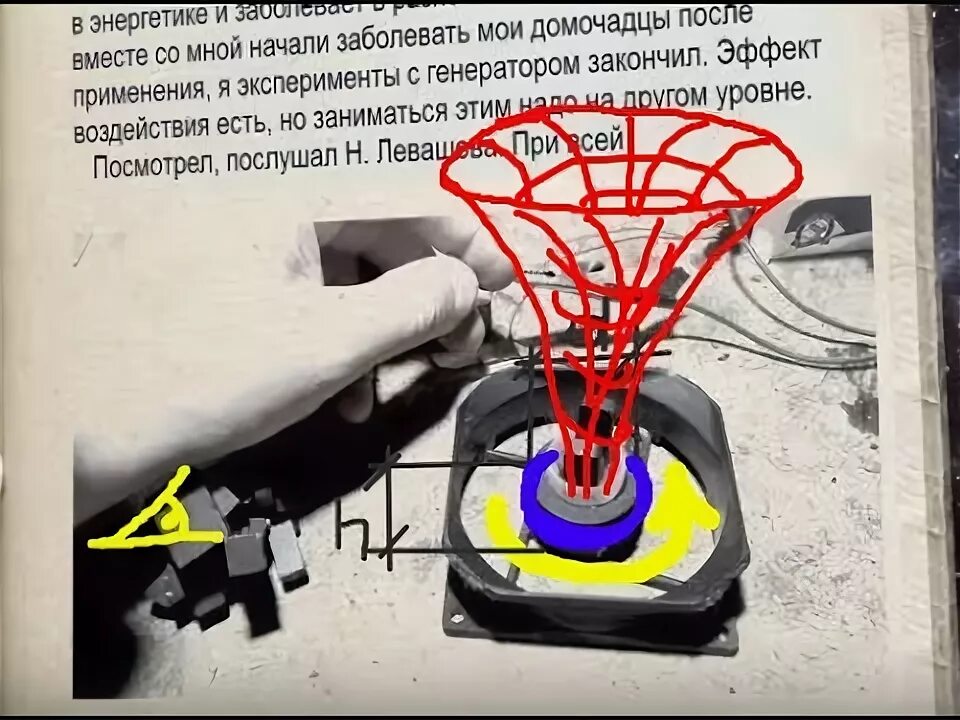
While our domestic democrats were looking for KGB torsion emitters, the US is studying the possibility of using AI for massive targeted propaganda.
US Special Operations Command Wants to ‘Suppress Dissent’ with AI
According to documents from the US Special Operations Command, the Pentagon plans to use AI to create and distribute impact content to “influence overseas target audiences” and “suppress dissent.”
To bolster its “advanced military information support operations technology capabilities” (also known as MISO), SOCOM is seeking a contractor that can “provide the ability to use AI agent systems or command-level multi-agent systems with specialized roles to scale up influence operations.”
https://theintercept.com/2025/08/25/pen ... influence/ - zinc
So, neurobots are already filling open comments and ensuring the replication of text, graphic and video materials produced by neural networks. The issue of further scaling seems to be purely technical, which will lead to further fragmentation of sovereign segments of the Internet with further fencing of state resources, basic messengers and social networks, with concomitant attempts to oblige verified access. Modern and promising neural networks will ultimately accelerate the elimination of what was previously understood as the "free Internet", as they provoke states to tighten control over individual segments of the network.
https://colonelcassad.livejournal.com/10035188.html
Google Translator
******
How ‘Human Rights’ Became a Western Weapon
August 26, 2025

By Kit Klarenberg – Aug 23, 2025
Kit Klarenberg exposes how the West weaponized “human rights” after the Helsinki Accords, turning a noble idea into a tool for regime change, sanctions, and imperial wars.
August 1st marked the 50th anniversary of the Helsinki Accords’ inking. The event’s golden jubilee passed without much in the way of mainstream comment, or recognition. Yet, the date is absolutely seismic, its destructive consequences reverberating today throughout Europe and beyond. The Accords not only signed the death warrants of the Soviet Union, Warsaw Pact, and Yugoslavia years later, but created a new world, in which “human rights” – specifically, a Western-centric and enforced conception thereof – became a redoubtable weapon in the Empire’s arsenal.
The Accords were formally concerned with concretising détente between the US and the Soviet Union. Under their terms, in return for recognition of the latter’s political influence over Central and Eastern Europe, Moscow and its Warsaw Pact satellites agreed to uphold a definition of “human rights” concerned exclusively with political freedoms, such as freedom of assembly, expression, information, and movement. Protections universally enjoyed by the Eastern Bloc’s inhabitants – such as guarantees of free education, employment, housing, and more – were wholly absent from this taxonomy.
There was another catch. The Accords led to the creation of several Western organisations charged with monitoring the Eastern Bloc’s adherence to their terms – including Helsinki Watch, forerunner of Human Rights Watch. Subsequently, these entities frequently visited the region and forged intimate bonds with local political dissident factions, assisting them in their anti-government agitation. There was no question of representatives from the Soviet Union, Warsaw Pact, or Yugoslavia being invited to assess “human rights” compliance at home or abroad by the US or its vassals.
As legal scholar Samuel Moyn has extensively documented, the Accords played a pivotal role in decisively shifting mainstream rights discourse away from any and all economic or social considerations. More gravely, per Moyn, “the idea of human rights” was converted “into a warrant for shaming state oppressors.” Resultantly, Western imperialist brutality against purported foreign rights abusers – including sanctions, destabilisation campaigns, coups, and outright military intervention – could be justified, frequently assisted by the ostensibly neutral findings of organisations such as Amnesty International, and HRW.
Almost instantly after the Helsinki Accords were signed, a welter of organisations sprouted throughout the Eastern Bloc to document purported violations by authorities. Their findings were then fed – often surreptitiously – to overseas embassies and rights groups, for international amplification. This contributed significantly to both internal and external pressure on the Soviet Union, Warsaw Pact, and Yugoslavia. Mainstream accounts assert the conception of these dissident groups was entirely spontaneous and organic, in turn compelling Western support for their pioneering efforts.
US lawmaker Dante Fascell has claimed the “demands” of “intrepid” Soviet citizens “made us respond.” However, there are unambiguous indications that meddling in the Eastern Bloc was hardwired into Helsinki before inception. In late June 1975, on the eve of US President Gerald Ford signing the Accords, exiled Soviet dissident Alexander Solzhenitsyn addressed senior politicians in Washington, DC. He appeared at the express invitation of hardcore anti-Communist George Meany, chief of the CIA-connected American Federation of Labor and Congress of Industrial Organizations (AFL-CIO). Solzhenitsyn declared:
“We, the dissidents of the USSR don’t have any tanks, we don’t have any weapons, we have no organization. We don’t have anything…You are the allies of our liberation movement in the Communist countries…Communist leaders say, ‘Don’t interfere in our internal affairs’…But I tell you: interfere more and more. Interfere as much as you can. We beg you to come and interfere.”
‘Political Aberration’
In 1980, mass strikes in Gdansk, Poland, spread throughout the country, leading to the founding of Solidarity, an independent trade union and social movement. Key among its demands was that the Soviet-supported Polish government distribute 50,000 copies of Helsinki’s “human rights” protocols to the wider public. Solidarity founder-and-chief Lech Walesa subsequently referred to the Accords as a “turning point”, enabling and encouraging the union’s nationwide disruption, and growth into a serious political force. Within just a year, Solidarity’s membership exceeded over 10 million.
The movement’s inexorable rise sent shockwaves throughout the Warsaw Pact. It was the first time an independent mass organisation had formed in a Soviet-aligned state, and others would soon follow. Undisclosed at the time, and largely unknown today, Solidarity’s activities were bankrolled to the tune of millions by the US government. The same was true of most prominent Eastern Bloc dissident groups, such as Czechoslovakia’s Charter 77. In many cases, these factions not only ousted their rulers by the decade’s end, but formed governments thereafter.
Washington’s financing for these efforts became codified in a secret September 1982 National Security Directive. It stated “the primary long-term US goal in Eastern Europe” was “to loosen the Soviet hold over the region and thereby facilitate its eventual reintegration into the European community of nations.” This was to be achieved by “encouraging more liberal trends in the region…reinforcing the pro-Western orientation of their peoples…lessening their economic and political dependence on the USSR…facilitating their association with the free nations of Western Europe.”
In August 1989, mere days after Solidarity took power in Poland, marking the first post-World War II formation of a non-Communist government in the Eastern Bloc, a remarkable op-ed appeared in the Washington Post. Senior AFL-CIO figure Adrian Karatnycky wrote about his “unrestrained joy and admiration” over Solidarity’s “stunning” success in purging Soviet influence in the country throughout the 1980s. The movement was the “centerpiece” of a wider US “strategy”, and had been funded and supported by Washington with the utmost “discretion and secrecy.”
Vast sums funnelled to Solidarity via AFL-CIO and CIA front the National Endowment for Democracy “underwrote shipments of scores of printing presses, dozens of computers, hundreds of mimeograph machines, thousands of gallons of printer’s ink, hundreds of thousands of stencils, video cameras and radio broadcasting equipment.” The wellspring promoted Solidarity’s activities locally and internationally. In Poland itself, 400 “underground periodicals” – including comic books featuring “Communism as the red dragon” and Lech Walesa “as the heroic knight” – were published, read by tens of thousands of people.
Karatnycky boasted of how the Empire was intimately “drawn into the daily drama of Poland’s struggle” over the past decade, and “much of the story of that struggle and our role in it will have to be told another day.” Still, the results were extraordinary. Writers for Warsaw’s NED-funded “clandestine press” had suddenly been transformed into “editors and reporters for Poland’s new independent newspapers.” Former “radio pirates” and Solidarity activists previously “hounded” by Communist authorities were now elected lawmakers.
Signing off, Karatnycky hailed how Poland proved to be a “successful laboratory in democracy-building,” warning “democratic change” in Warsaw could not be a “a political aberration” or “lone example” in the region. Karatnycky looked ahead to further neighbourhood insurrection, noting AFL-CIO was engaged in outreach with trade unions elsewhere in the Eastern Bloc, including the Soviet Union itself. So it was, one by one, every Warsaw Pact government collapsed in the final months of 1989, often in enigmatic circumstances.
‘Shock Therapy’
The “revolutions” of 1989 remain venerated in the mainstream today, hailed as examples of peaceful transitions from dictatorship to democracy. They have also served as a template and justification for US imperialism of every variety in the name of “human rights” in all corners of the globe since. Yet, for many at the forefront of Western-funded, Helsinki Accords-inspired Warsaw Pact dissident groups, there was an extremely bitter twist in the tale of the overthrow of Communism in Central and Eastern Europe.
In 1981, Czechoslovak playwright and Charter 77 spokesperson Zdena Tominová conducted a tour of the West. In a speech in Dublin, Ireland, she spoke of how she’d witnessed first-hand how her country’s population had benefited enormously from the state’s Communist policies. Tominová made clear she sought to fully maintain all its public-wide economic and social benefits, while adopting Western-style political freedoms only. It was a shocking statement to make for a woman who’d risked imprisonment to oppose her government with foreign help so publicly:
“All of a sudden, I was not underprivileged and could do everything…I think that, if this world has a future, it is as a socialist society, which I understand to mean a society where nobody has priorities just because he happens to come from a rich family,” Tominová declared. She moreover made clear her vision was global in nature – “the world of social justice for all people has to come about.” But this was not to be.
Instead, Eastern Bloc countries suffered deeply ravaging transitions to capitalism via “shock therapy”, eradicating much of what citizens held dear about the systems under which they’d previously lived. They were thrust into a wholly new world, where hitherto unknown homelessness, hunger, inequality, unemployment, and other societal ills became commonplace, rather than prevented by basic state guarantee. After all, as decreed by the Helsinki Accords, such phenomena didn’t constitute egregious breaches of “human rights”, but instead were the unavoidable product of the very political “freedom” for which they had fought.
https://orinocotribune.com/how-human-ri ... rn-weapon/
******
Microsoft requests FBI help to shut down anti-genocide protests: Report
Current and former employees say Microsoft’s Azure cloud platform is aiding the Israeli genocide of Palestinians in Gaza
News Desk
AUG 26, 2025

(Photo credit: Jason Redmond/AFP via Getty Images)
Microsoft has asked the FBI for assistance in monitoring demonstrations by employees demanding the company cut its ties with Israel, according to documents cited in a Bloomberg report published on 26 August.
In emails seen by Bloomberg, a company director of investigations asked the FBI for intelligence on planned demonstrations.
The official highlighted former employee Hossam Nasr as “quite active in his posts targeting Microsoft and that we are complicit in genocide,” and noted the company had identified a handful of employees tied to the protests, including one of their children.
The FBI’s Seattle office said it respects the right to peaceful protest and only acts on criminal activity or threats to national security. The bureau declined to confirm any interactions with Microsoft.
Last week, 20 people were arrested at the company’s Redmond headquarters for demonstrating and blocking the plaza entrance. Protesters declared a “liberated zone,” set up tents, chanted, linked arms, refused police orders, and called on colleagues to join them.
Microsoft President Brad Smith said the company welcomed discussion but would not tolerate disruptions.
“To have them engaging in vandalism and destructive behavior obviously makes clear that this aspect of the issue is no longer about dialogue with employees. It’s a matter for law enforcement, and that’s how we’re treating it,” he told Bloomberg.
Microsoft reinforced that stance at its Build conference in Seattle, where public areas were closed, airport-style security was imposed, and employees who interrupted executive speeches, including one by Chief Executive Officer Satya Nadella, were removed or dismissed.
Organizers say around 200 current and former staff remain engaged enough to sustain periodic protests.
Smith noted that most protesters were not Microsoft employees, unlike No Azure for Apartheid – the protest network of current and former staff, who accuse the company of profiting from Israel’s assault on Gaza by selling software and artificial intelligence tools to its military.
“These are technological weapons. Cloud and AI are just as deadly as bombs and bullets,” said activist Vaniya Agrawal, who resigned earlier this year and was later arrested during a demonstration.
The pressure forced Microsoft to open inquiries into its contracts with Israel. In May, it insisted it found “no evidence” its software had been used to target Palestinians.
Investigations by The Guardian, +972 Magazine, and Local Call revealed that Israel’s Unit 8200 stored millions of intercepted Palestinian phone calls on Microsoft’s Azure servers.
Unit 8200 sources confirmed that intelligence drawn from the repositories of calls had been used to research and identify bombing targets in Gaza.
The unit was also directly involved in the large-scale pager terror attack against Lebanon that killed 42 people, including two children, and wounded over 3,500.
The company launched a new independent review on 15 August, pledging to release the findings once complete, though activists dismissed it as a delaying tactic.
https://thecradle.co/articles/microsoft ... sts-report


